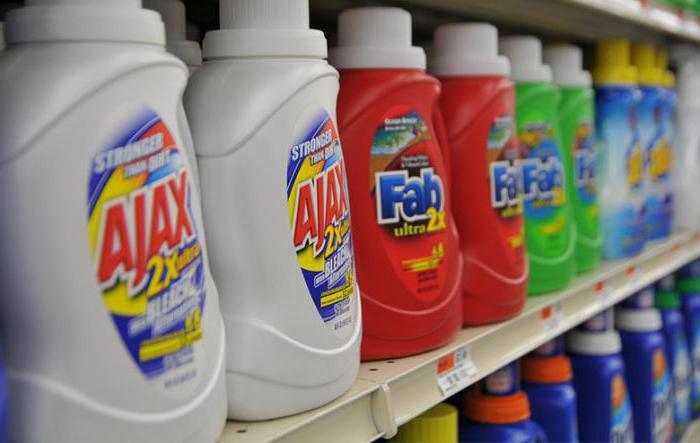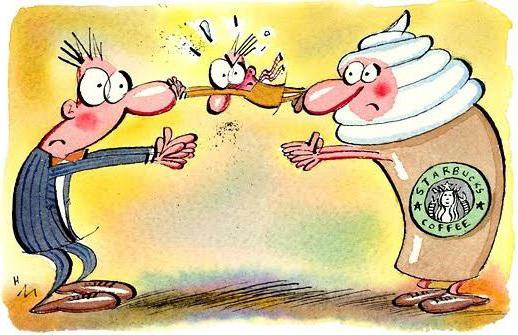Monopolistic competition is a type of imperfect market competition in which many manufacturers sell products that are different from each other. The company monitors the prices set for other products, but at the same time tries to ignore the influence of the cost of other goods. Models of monopolistic competition can often be seen in light industry. Typically, such a system is valid for firms of various industries in market structure: restaurants, the manufacture of clothing, shoes, as well as the services sector (usually in large cities), etc. Edward Hastings Chamberlin, who wrote the groundbreaking book Theory of Monopolistic Competition (1933), is considered the “Founding Father” of the concept. . Joan Robinson published The Economy of Imperfect Competition, which juxtaposed two types of market competition.

Specifications
Exclusively competitive markets have the following characteristics:
- There are many manufacturers and many consumers in the market, and no business has full control over the market price.
- Consumers believe that there are non-price differences between competitors' products.
- There are several barriers to entry and exit.
- All manufacturers in aggregate have a certain degree of price control.
In the long run, the characteristics of monopolistic competition are practically the same as in the case of perfect competition between manufacturers. The differences between them are that in the first type the market produces heterogeneous products. The company makes a profit in the short term, however, it may lose it in the long term, as demand will decrease and the average total cost will increase.
Features of the market of monopolistic competition
So, the market of monopolistic competition has 6 distinctive features, these are:
- Product differentiation.
- Many firms.
- There are no serious barriers to entry and exit to the market in the long run.
- Independent decision making.
- A certain degree of market power.
- Buyers and sellers do not have complete information (imperfect information.
Let us consider the features of monopolistic competition in more detail, having talked about each separately.

Product differentiation
Firms in monopolistic competition sell products that have real or perceived non-price differences. However, they are not so large as to exclude other products as substitutes. Technically cross demand elasticity between products in such a market is positive. They perform the same basic functions, but have differences in qualities such as type, style, quality, reputation, appearance, which are usually needed to distinguish them from each other. For example, the main task of vehicles for moving people and objects from point to point is the rationality of design, comfort and safety. However, there are many different types of equipment, such as scooters, motorcycles, trucks and cars.

Many firms
Monopolistic competition exists subject to the presence of a large number of firms in each product group, as well as a number of companies on the so-called sideline that are ready to enter the market.The fact that there are a large number of participants gives each of them the freedom to set prices without participating in strategic decisions regarding the prices of other firms, and the actions of each of the companies are practically irrelevant.

How many firms should be in market structure monopolistic competition to maintain equilibrium? The answer to this question depends on factors such as fixed costs economies of scale and degree of product differentiation. In addition, the higher the degree of product differentiation, the more the company can separate itself from other competitors, and the less participants will be in a state of market equilibrium.
There are no major barriers to entry in the long run.
To enter and exit the market does not require large expenses. There are numerous companies that are ready to become new participants, each with its own unique product. Any company that is not able to cover its costs can exit the game without financial costs of liquidation. Another thing is that it is necessary to create such a company and product that will be able to withstand conditions and remain “afloat”.
Independent Decision Making
Each monopolistic competition firm independently sets the terms of exchange for its product. The company does not look at what impact the decision may have on competitors. The idea of such an approach is that any action will have such a slight effect on the market as a whole, that the company can act without fear of serious competition. In other words, each business entity feels free to set prices.
Market power
Firms with monopolistic competition have some degree of market power. This means that participants have control over the terms and conditions of the exchange, namely they can raise prices without losing all their customers. And the source of such power is not a barrier to entry into the market. Firms of monopolistic competition can also lower the cost of a product without causing a potentially disastrous price war with competitors. In such a situation, the demand curve is very elastic, although not flat.
Inefficiency
There are two sources in which the market for monopolistic competition is considered inefficient. First, with optimal access to it, the company sets a price that exceeds marginal costs, as a result of which the company maximizes profits in which marginal revenue is equal to marginal costs. Since the demand curve is tilted down, this means that the participant will absolutely accurately set a price that exceeds marginal cost. A second source of inefficiency is the fact that firms operate with excess capacity. That is, the company will first maximize profits when it enters the market. But in both pure and monopolistic competition, players will work at a point where demand or price are equal to average cost. For a firm in a purely competitive market, this equilibrium is where the demand curve is perfectly elastic. Thus, in the long run, it will be tangent to the average cost curve at a point to the left of the minimum. The result is an excess of production capacity and monopolistic competition, the equilibrium in which will be upset.

Socially Undesirable Aspects Compared to Perfect Competition
Excessive production capacity: in conditions of imperfect competition, the ability of each company is great, but it is not fully realized. The total volume of production is therefore less than output, which is desirable for society. Since the possibilities are not fully utilized, the resources will be idle. Thus, production within the framework of monopolistic competition is below the level of full return.
- Unemployment: competition of monopolistic activity leads to a decrease in employment. In particular among workers, this leads to poverty and poverty in society. If the unused capacity is still fully realized, the percentage of citizens who are unemployed will decrease. However, this will not be enough to completely get rid of unemployment.
- Fare: With monopolistic competition, costs are also high for cross-shipments. If goods are sold only locally, wasteful spending can be avoided.
- Lack of specialization: There are few opportunities for typing and standardization. Product differentiation is practiced as part of this competition and leads to a significant share of the cost. Instead of producing too many similar products, you can get a few standardized ones. Thanks to this principle, society would receive in sufficient quantities the benefits it needs.
- Inefficiency: a company in conditions of monopolistic competition, despite many circumstances, continues to survive, while with a perfect form of competition in the market, companies incapable of efficient production disappear.
The problem of company inefficiency
Exclusively competitive firms are often inefficient. This usually happens if the costs exceed the benefits. A market participant can be called slightly ineffective if the company produces products whose average total cost is neither minimum nor maximum. A monopolistically competitive market is a relatively unstable structure, since marginal costs are less than the price in the long run. Product differentiation increases overall utility by better meeting people's needs than through homogeneous products.

The problem of advertising and brands
Another problem is that monopolistic competition fosters advertising and the creation of brand names. Advertising encourages customers to spend more on products because of the brand, and not because of rational factors. Advocates of this model dispute this, arguing that trademarks can be a guarantee of quality and help lower consumer search costs. In the monopoly market, the consumer is faced with a single brand. But do not forget that the consumer must collect and process data on a large number of different items in order to be able to choose the best of them. Thus, markets for perfect and monopolistic competition are very different in this regard. The cost of gathering the information necessary to select the best brand can exceed the benefits of consuming the best option instead of a randomly selected brand. The result is that the consumer gets confused. Thanks to this, monopolistic competition, the equilibrium of which is greatly upset, gives some companies a chance to gain fame.
Available data indicate that the consumer uses information to conclude that other competitors that he still did not know exist. In addition, this is an opportunity to conclude customer satisfaction with products from similar companies. This helps people evaluate which products are worth buying and which ones are best avoided.
Examples
In many markets (for example, among manufacturers of toothpastes, smartphones, shoes), manufacturers practice product differentiation by changing the physical composition, their appearance, the use of special packaging or simply claim to have the best products (naturally, due to high-quality and expensive advertising )

A vivid example are the companies PepsiCo (Pepsi, Lay’s) and Mars (Skittles, Snickers, KitKat), which produce food products for various purposes.The comparison line can take Royal Canin, animal feed from Mars, and mineral water "Essentuki" from PepsiCo. In fact, these are different areas of activity, however, due to the fact that firms produce other, similar products, we are faced with monopolistic competition in its purest form.








